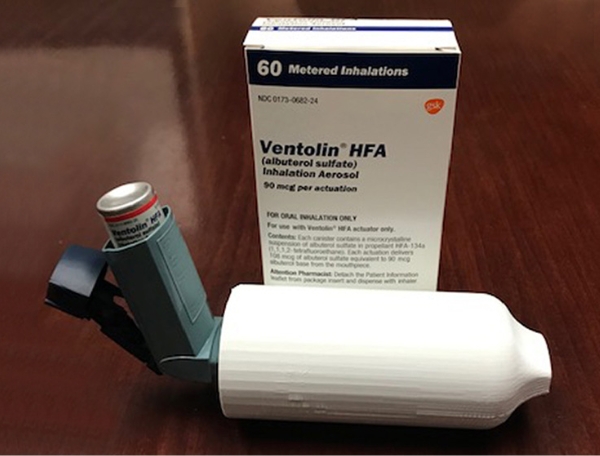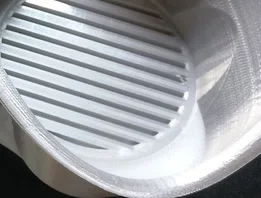


Outcomes research
Nipping Post-transplant Infections in the Blood
Solid organ transplantation (SOT) saves the lives of those with organ failure. In the U.S. alone, nearly 40,000 organ transplants are performed each year. However, with a life-saving organ transplant comes an increased risk of post-transplant complications, including blood stream infections (BSI). BSIs occur in up to 30% of patients after liver transplantation, and infections increase mortality in this population.
Although all SOT patients have an increased risk of BSI, operative and anatomical factors such as level of immunosuppression, direct intestinal disruption, and likelihood of post-operative critical illness can increase risk for some organ transplants more than others. For example, liver transplant includes a higher risk of BSI with enterococci because of biliary and intestinal involvement. Conversely, kidney transplant recipients are at higher risk of BSI due to urinary tract pathogens such as Escherichia coli and Klebsiella spp.

Max W. Adelman, MD, MSc
To make matters worse, the frequency of infections due to multidrug-resistant organisms (MDROs), has increased among hospitalized patients with transplant patients being some of the most susceptible.
Despite the increased risk of MDROs and their impact on transplant patient outcomes, data from the U.S. on clinical epidemiology of MDROs among SOT recipients are limited. To address the need for more data, Houston Methodist physician-researchers performed a single-center, retrospective study of adult patients who had kidney, liver, heart or multi-organ transplantation (e.g., heart/liver, heart/kidney, liver/kidney or heart/liver/kidney) from June 2016 through September 2021. They included clinical data through January 2023 to allow for BSIs in the year after SOT as well as three-month mortality after BSI. Patients transplanted with an organ other than kidney, liver or heart, patients who underwent dual-organ transplantation during separate hospitalizations and patients who had re-transplant of the same organ, were excluded.
Blood cultures from a total of 2,293 transplant patients were drawn for clinical care in the first year post-SOT and assessed for infection, with pathogen identification and antimicrobial susceptibility performed by the microbiology laboratory. Their results indicated that 8.5% of the cohort developed at least one BSI in the year following the transplant, with the highest risk in multi-organ transplant recipients, followed by liver, heart and kidney. There were 313 BSI episodes identified, 10 of which included two organisms, yielding 323 unique isolates. They also found that 29.1% of patients with BSI experienced multiple BSI episodes. Again, this was found to be most common in multi-organ and liver recipients.
The most prevalent organisms isolated in the study were Klebsiella spp. (Enterobacterales) followed by E. coli, Enterococcus faecium, P. aeruginosa and S. aureus. Out of the 323 isolates, 45.5% were MDROs—a striking proportion—with liver transplant recipients harboring the most, followed by multi-organ transplant recipients.
When they analyzed outcomes at 90 days after BSI onset, they found 9.7% mortality, though no specific patient characteristic (age, race, gender, transplant type, ICU admission at time of transplant, or Charlson comorbidity index) was associated with increased mortality after BSI. The only patient or organism characteristic independently associated with 90-day mortality after BSI was vancomycin-resistant Enterococcus, which was significantly associated with mortality in both univariable and multi-variable models.
Klebsiella pneumoniae
Escherichia coli

P. aeruginosa
Pseudomonas aeruginosa
Staphylococcus aureus

Prospective translational cohort studies are needed to identify potential reservoirs of recurrent BSI in these high-risk patients, and to determine whether recurrent BSI generally reflects inadequate source control, antibiotic failure due to antibiotic resistance or other factors.

Max W. Adelman, MD, MSc
Assistant Professor, Medicine
While this study is limited to a single center and did not include data on confounding factors, it does provide important insights into prevalence of BSI in SOT recipients. Their finding that multi-organ transplant recipients have a significant BSI burden has not previously been shown and warrants further study. As does their data on high MDRO burden among SOT patients in a high-volume transplant center.

Isolates causing BSIs (n = 323), categorized by antimicrobial resistance profiles, in the year after SOT. Areas are proportional to number of BSIs due to each specific organism. CSPA, carbapenem-susceptible P. aeruginosa; VSE, vancomycin-susceptible Enterococcus.
“Prospective translational cohort studies are needed to identify potential reservoirs of recurrent BSI in these high-risk patients, and to determine whether recurrent BSI generally reflects inadequate source control, antibiotic failure due to antibiotic resistance, or other factors,” said Max W. Adelman, MD, MSc, Assistant Professor of Medicine and first author on the study. “Our results can guide future research on strategies to decrease burden and impact of MDROs after SOT.”
Heather Lander, PhD
July 2024








